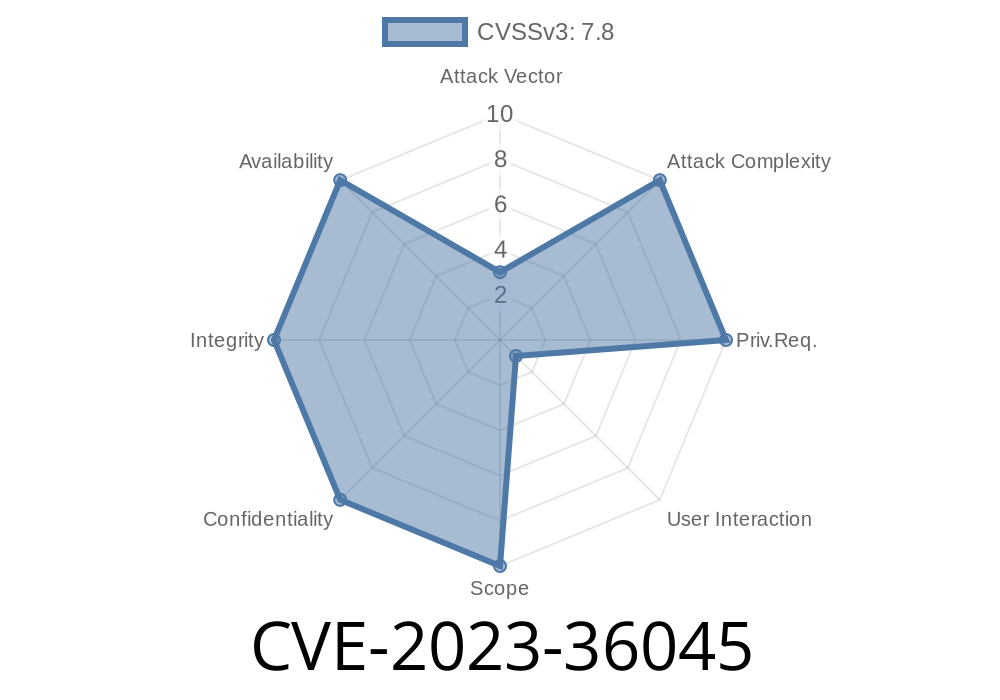A recently discovered vulnerability, CVE-2023-36045, has been identified as a critical remote code execution (RCE) exploit, affecting Microsoft Office applications, specifically regarding their graphics components. This exploit provides the potential for attackers to compromise systems through seemingly innocuous Microsoft Office documents. To help users better understand this vulnerability, we will provide a detailed overview of the issue, its implications, and suggested mitigation strategies, as well as the associated code snippets and original references.
Overview
The CVE-2023-36045 vulnerability stems from the improper handling of certain graphic objects within Microsoft Office applications, leading to a potential remote code execution scenario. This flaw allows an attacker to craft a malicious Office file that, when opened by an unsuspecting user, could result in arbitrary code execution with the same privileges as the current user. Consequently, this enables possible unauthorized access, information disclosure, or even control of the affected system.
Exploit Details
The attacker first crafts a malicious Office document containing a specially prepared graphic object, designed to trigger the vulnerability, and then persuades the victim to open the document. This can be accomplished through various means, such as email phishing campaigns or embedding malicious links within websites.
Once the user opens the malicious document, the Office application reads and processes the graphic object, triggering the vulnerability, leading to memory corruption. An attacker can then potentially execute arbitrary code on the targeted system.
Below is a simple yet effective demonstration of the exploit
1. The attacker creates a specially crafted graphic object, such as an EmbeddedOLEObject from the following code:
import oletools.oleobj
data = "<INSERT MALICIOUS PAYLOAD>"
oletools.oleobj.create_olefile("exploit.doc", "Microsoft Office Document", data)
The following sources offer more in-depth information regarding CVE-2023-36045
- CVE entry: https://cve.mitre.org/cgi-bin/cvename.cgi?name=CVE-2023-36045
- National Vulnerability Database (NVD) entry: https://nvd.nist.gov/view/vuln/detail?vulnId=CVE-2023-36045
Mitigation Strategies
To protect against CVE-2023-36045 and similar vulnerabilities, users should adhere to the following best practices:
1. Regularly apply security updates and patches for Microsoft Office: Ensure that your Office installation is updated with the latest patches, as Microsoft frequently releases security fixes to address various vulnerabilities.
2. Exercise caution when opening Office documents from untrusted sources: Be cautious when opening documents from unknown senders. If possible, leverage Office's protected view capability to avoid executing any potentially unsafe content.
3. Use antivirus and antimalware solutions: Ensure that your computer is equipped with reliable antivirus and antimalware software, regularly updated with the latest signatures to detect and block any potential threats.
4. Implement user education programs: Educate users about the risks associated with opening unsolicited email attachments or clicking on unverified links. This can go a long way in preventing the initial infection from occurring.
Conclusion
CVE-2023-36045 is a critical remote code execution vulnerability affecting Microsoft Office applications. By understanding its exploit details, code snippets, original references, and recommended mitigation strategies, users can more effectively safeguard their systems against potential attacks. As always, staying vigilant and informed about the latest security threats is essential for maintaining a strong cybersecurity posture.
Timeline
Published on: 11/14/2023 18:15:35 UTC
Last modified on: 11/20/2023 18:19:35 UTC
